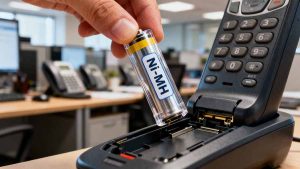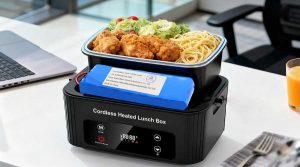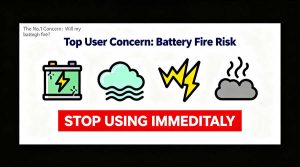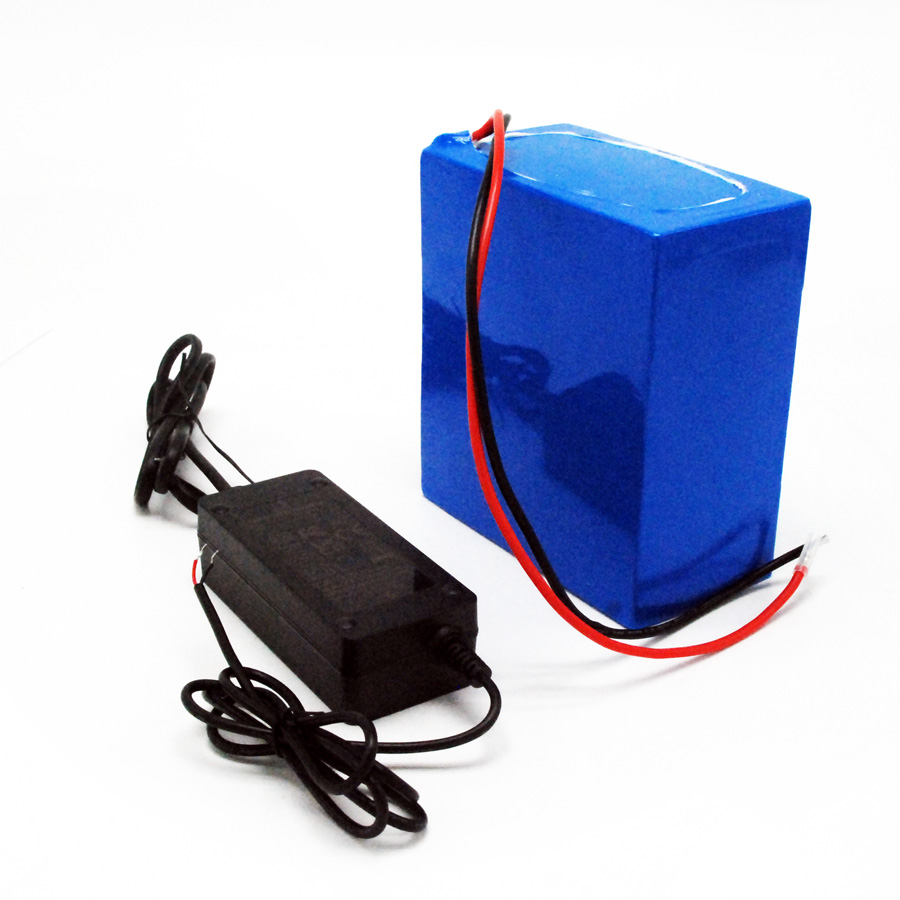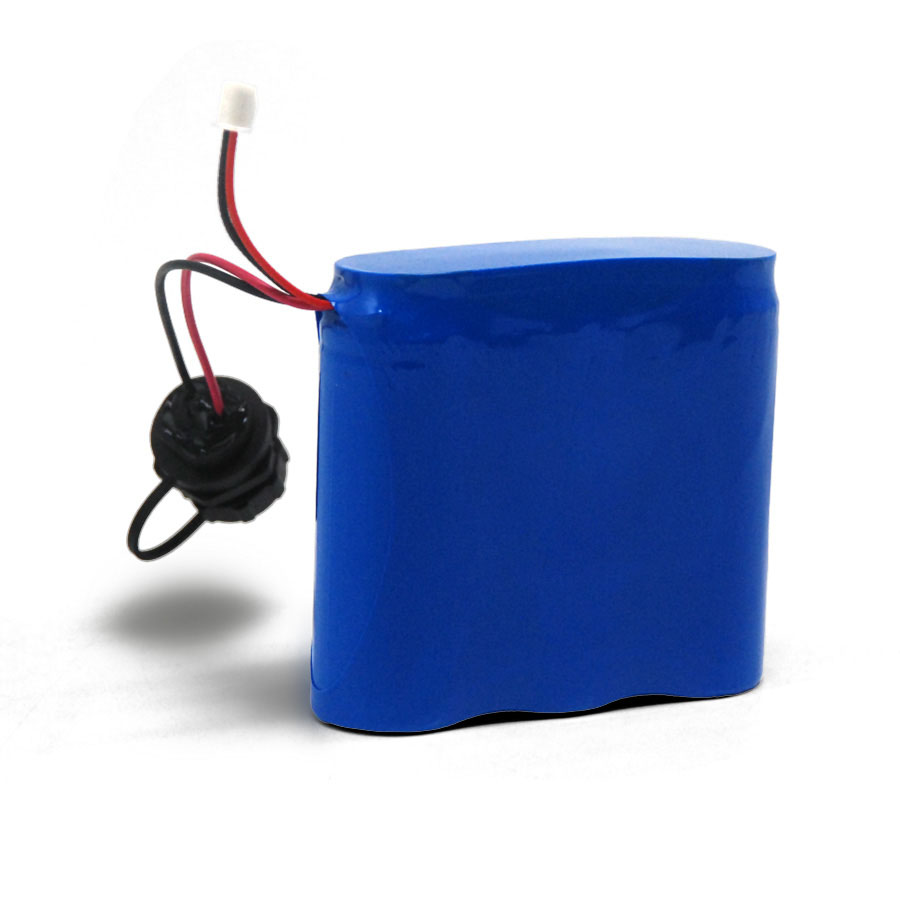Intro — who this article is for
If you sell, buy, or use an electric lunch box (heated lunch container), this guide explains why a dedicated 7.4V Li-ion battery is a practical power option. We’ll cover real-world advantages, safety features, simple runtime math, maintenance best practices, common worries answered, and how Himax’s 7.4V batteries (8000 / 10000 / 14000mAh) fit typical use cases.
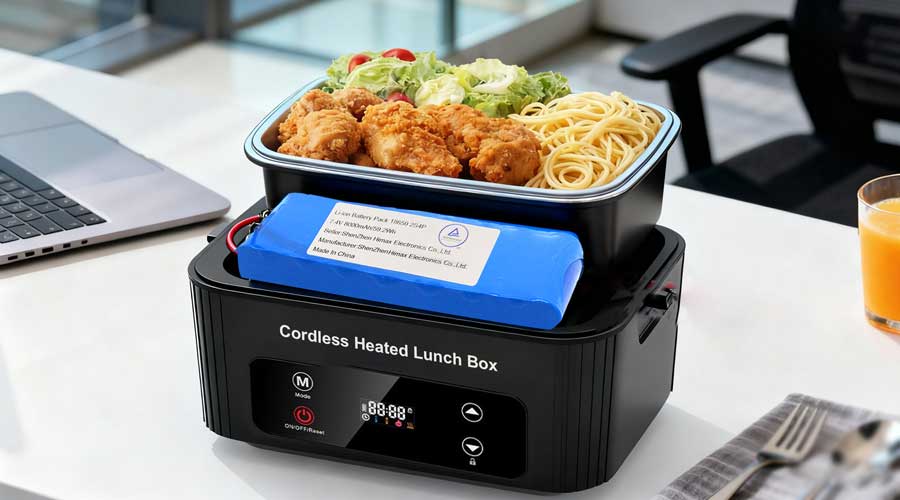
Why choose a dedicated battery pack for a heated lunch box?
·True portability. No need to find an outlet or be near a vehicle socket — ideal for construction sites, outdoor workers, commuters, and road trips.
·Stable voltage for consistent heating. A properly designed battery + BMS keeps output within safe ranges so the heater runs predictably.
·Modular capacity options. Choose 8000mAh for lighter carry and short lunches, 10000–14000mAh for longer or multiple uses between charges.
·Replaceable and upgradable. Swap to a larger pack if you need more runtime without replacing the lunch box.
Example: how battery capacity translates to runtime (easy math)
You can estimate runtime from battery Wh (watt-hours) and heater power (watts).
Step 1 — convert mAh to Wh:
Wh = (V × mAh) ÷ 1000
·7.4V × 8000mAh ÷ 1000 = 59.2 Wh
·7.4V × 10000mAh ÷ 1000 = 74.0 Wh
·7.4V × 15000mAh ÷ 1000 = 103.6 Wh
Step 2 — divide by heater power (W):
Runtime (hours) ≈ Wh ÷ Heater_W
Real example: a common portable electric lunch box is rated ~100W (this is a typical model spec used in market listings).
·7.4V 8000mAh → 59.2 Wh ÷ 100 W ≈ 0.59 hours ≈ 35 minutes
·7.4V 10000mAh → 74.0 Wh ÷ 100 W ≈ 0.74 hours ≈ 45 minutes
·7.4V 14000mAh → 103.6 Wh ÷ 100 W ≈ 1.04 hours ≈ 62 minutes

Notes:
·These are theoretical estimates (ideal). Real runtime is lower because of conversion losses, heater efficiency, and BMS cutoff. Expect 10–25% less runtime in practice.
·If a lunch box uses lower power (e.g., 40–60W), runtimes scale proportionally (longer run). Always check the lunch box rated power before buying a battery.
Safety: why a quality 7.4V Li-ion pack is safe when designed properly
Key safety features a buyer should expect from reputable battery packs:
·Battery Management System (BMS): protects against overcharge, overdischarge, overcurrent, short circuit, and temperature extremes.
·Cell screening and testing: reputable manufacturers test cells for capacity, internal resistance, and aging.
·Mechanical protection & enclosure: impact-resistant casing, thermal pathways, and safe connector design.
·Certifications and transport testing: cells and packs should follow accepted safety standards (IEC 62133 for portable battery safety and UN 38.3 for transport testing). These standards exist to verify batteries behave safely during normal use and shipping.
Himax builds packs with protective electronics and factory testing procedures to meet industry safety expectations.
Common customer concerns — answered
Q: Will the battery overheat while heating food?
A: A well-designed system separates the heater circuit and battery BMS monitoring. If the pack or heater gets unusually hot, stop use and inspect. Reputable heaters and battery packs include thermal safeguards; still, avoid insulating the battery while in heavy use.
Q: Can I charge the battery while I’m heating the lunch box?
A: Technically possible with some designs, but not always recommended. Charging and high discharge at the same time generates extra heat and stresses the cells. If your battery/charger manufacturer explicitly supports “pass-through” use, follow their guidance. When in doubt, charge and discharge separately.
Q: How long will the battery last (cycles)?
A: Typical Li-ion packs used for power tools and mobile power run hundreds to a few thousand cycles depending on chemistry and depth of discharge. Avoid regular deep discharges when possible to maximize cycle life.
Q: Is it safe to carry the battery on flights?
A: Air transport of lithium batteries follows strict rules (UN 38.3, airlines/IATA rules). Small consumer packs are often permitted in carry-on within airline limits, but commercial shipments must meet UN/IATA packaging and documentation requirements. Consult carrier rules before shipping or flying with many spare packs.
Maintenance and best practices (keep your battery healthy)
·Storage state of charge (SoC): For longer shelf life, store Li-ion packs at partial charge — around 30–50% is commonly recommended; avoid long storage at 100% or 0%.
·Temperature: Store and operate batteries within recommended temperature ranges (ideally room temperature; avoid repeated exposure above ~122°F/50°C or below freezing). High temperature worsens aging.
·Use the right charger: Always use chargers specified by the battery manufacturer (correct voltage/current and protections). Avoid ultra-fast chargers unless the battery is rated for them.
·Visual checks: Regularly inspect for swelling, damage, discoloration, or abnormal heat. If any appears, stop using the pack and contact support.
·Connector care: Keep connectors clean, dry, and free of debris; use protective caps if provided.
·Avoid mechanical abuse: Don’t drop, crush, or puncture battery packs.
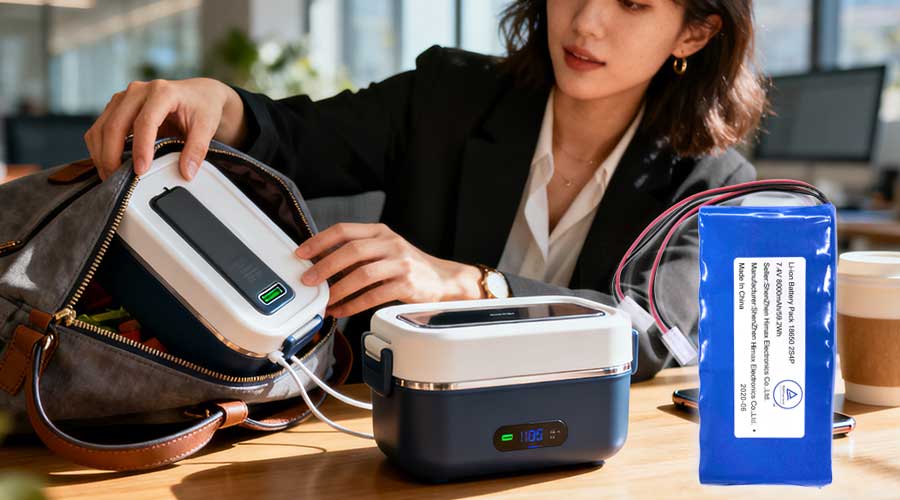
Installation & matching the lunch box
·Match voltage & polarity. Confirm the lunch box nominal voltage requirement and connector polarity before connecting a pack. A 7.4V battery is intended for lunch boxes that accept that system voltage.
·Check rated heater power. Use the runtime math above to choose the capacity you need. If the heater draws high current continuously, prefer a higher-cap battery with a BMS able to handle the discharge current.
·Fuse & cable protection. For safety, devices and battery packs often include fuses — don’t bypass them. For high current applications use appropriately rated cables and connectors.
Quick troubleshooting
·Lunch box won’t heat: Check battery charge level, connector seating, BMS LED indicators (if present), and any inline fuses.
·Battery won’t charge: Try another compatible charger and cable; if still not charging and pack is warm or swollen, discontinue use.
·Excess heat, smell, smoke, or swelling: Disconnect immediately, move to a safe place, and follow local hazardous waste rules for disposal; contact manufacturer support.
Shipping, compliance and wholesale considerations
If you’re buying or reselling battery packs in bulk, make sure the manufacturer provides UN 38.3 test summaries and IEC 62133 compliance documentation as needed for cross-border transport and local regulations. For large shipments, packaging, labelling, and documentation must follow IATA/IMDG rules.
Why choose Himax for electric lunch box batteries?
·Popular models for lunch boxes: 7.4V 8000mAh (best seller), 7.4V 10000mAh, and 7.4V 14000mAh — options balance weight, size, and runtime for different use profiles.
·Factory testing & QC: Himax implements cell screening, pack assembly checks, and BMS testing before shipment.
·Custom options & support: We can tailor capacity, connector type, and protective features to match specific lunch box models or reseller requirements.
·After-sales & samples: Sample programs and small-lot orders available for product testing and qualification.
Conclusion & call to action
A properly designed 7.4V Li-ion battery pack gives electric lunch boxes real portability and flexibility — pick capacity based on heater power and how long you need to heat. For most users who want a compact, reliable option, Himax’s 7.4V 8000mAh is an excellent balance of size and runtime; upgrade to 10000 or 14000mAh for longer use.
Find articles related to 7.4V Li-ion Battery


